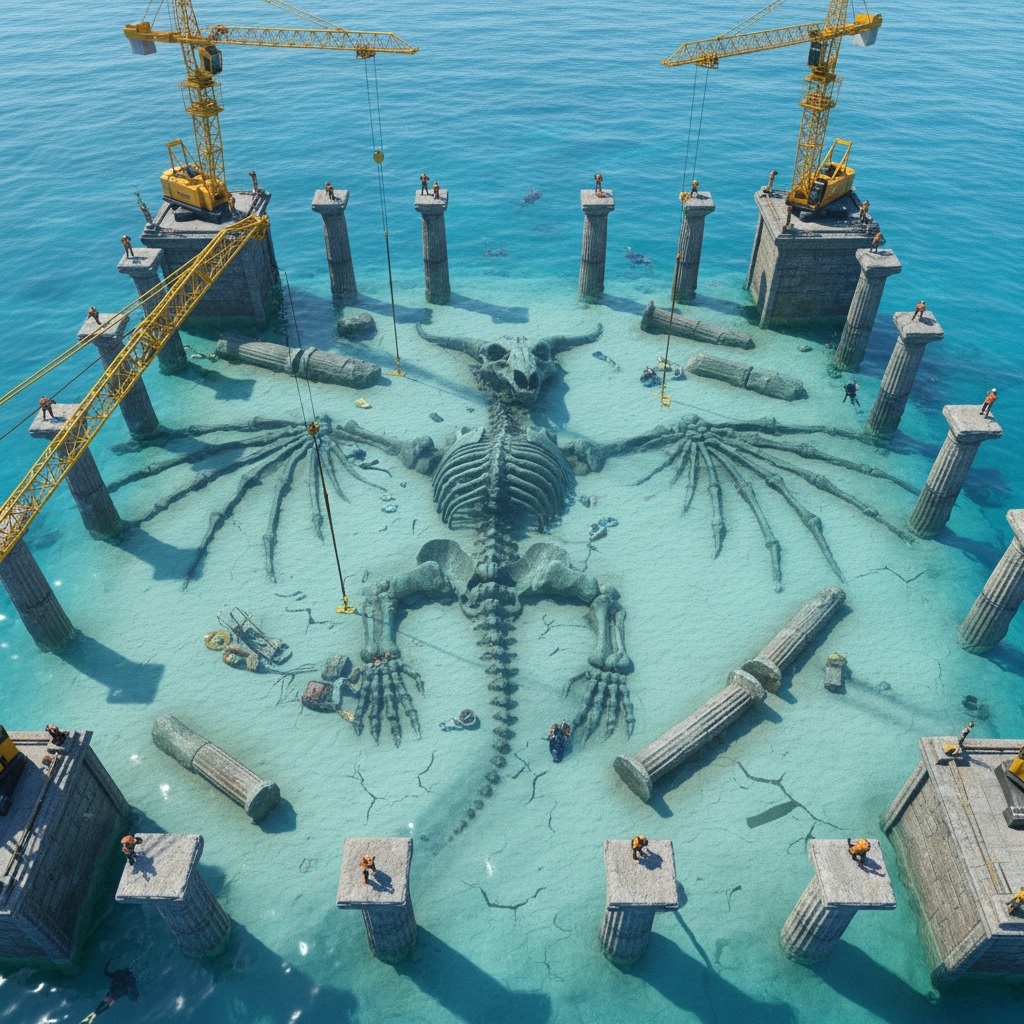The Sunken Titan of Santorini: Unearthing the Aegean Dragon

The year is 2077. Climate change has reshaped coastlines, but also revealed new mysteries. Dr. Aris Thorne, head of the Aegean Marine Archaeology Institute, stared at the sonar readings, disbelief warring with exhilaration. What had started as a routine survey of a newly exposed underwater shelf near the caldera of Santorini had turned into the discovery of a lifetime.
“It can’t be real,” whispered his assistant, Elara Vance, her fingers tracing the monstrous outline on the screen.
But it was.
Beneath 30 meters of impossibly clear, sapphire water, lay the skeletal remains of something so colossal, so fantastical, it defied every known paleontological classification. A skull with sweeping horns, a colossal rib cage, and immense, bat-like wings stretched across the seabed – a dragon, in every terrifying and magnificent sense of the word.
The excavation began with unprecedented speed and secrecy. Specialized submersible cranes, their yellow arms stark against the cerulean backdrop, were deployed to carefully clear millennia of sediment. Ancient, colossal stone pillars, clearly man-made and bearing symbols unknown to modern Aegean history, encircled the leviathan’s resting place. These weren’t natural formations; they were a monument, a tomb, a prison.
As divers meticulously mapped and documented the bones, a narrative began to emerge, whispered from the depths of time. Early Bronze Age Cycladic artifacts were found embedded in the surrounding bedrock – not just everyday tools, but ceremonial offerings, petrified sacrifices. The pillars themselves showed signs of extraordinary craftsmanship, predating the Minoan civilization by thousands of years.
Was this the beast of ancient Greek myth? The Lernaean Hydra? A forgotten titan that terrorized the early inhabitants of the Aegean? Or was it something even more profound – a species unknown, a remnant of a world that existed before recorded history?
The discovery sent shockwaves through the scientific community. Skeptics cried hoax, but the sheer scale and geological context of the find were undeniable. Dr. Thorne knew this was more than just a fossil; it was a key. A key to understanding the deep myths that permeated human consciousness, a bridge between the fantastical and the factual, lying silently beneath the waves of the same volcano that had shaped so much of ancient history. The Sunken Titan of Santorini wasn’t just an archaeological marvel; it was a re-writing of humanity’s oldest stories, a glimpse into a primordial Aegean where colossal creatures walked (or flew) the earth, and ancient civilizations built monuments to honor, or perhaps, to contain them. The world held its breath, waiting for the secrets the Aegean Dragon would finally reveal.
